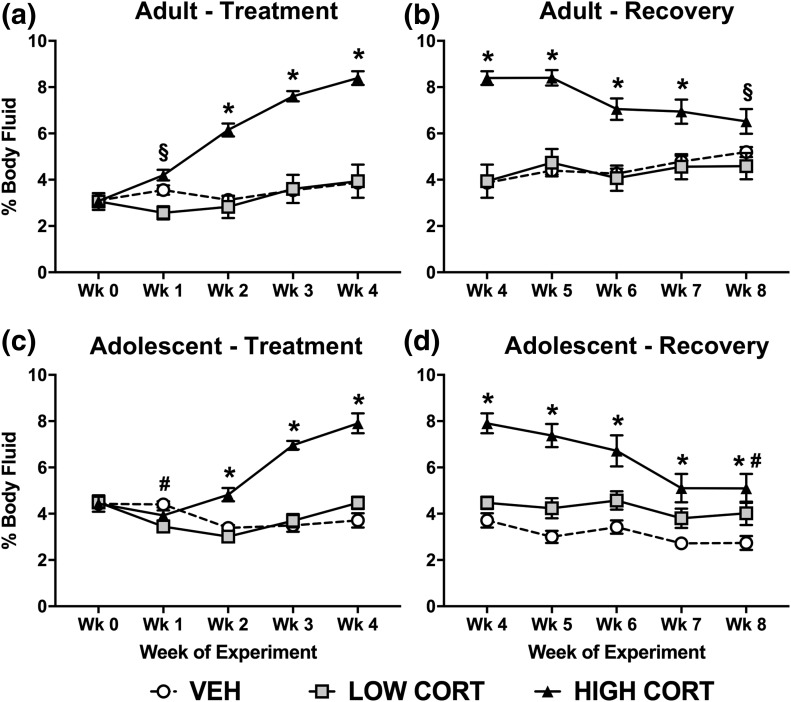Figure 4.
CORT exposure leads to lasting increases in body fluid in adolescent, but not adult mice. (a) In adult mice, treatment with both high and low doses of CORT increased body fluid, with a main effect of treatment time (F4, 84 = 74.59, P < 0.0001), dose of CORT (F2, 21 = 24.61, P < 0.0001), and a significant interaction (F8, 84 = 33.54, P < 0.0001). (b) During recovery, body fluid normalized in adult CORT-treated mice, with a main effect of treatment time (F4, 84 = 5.275, P = 0.0008), dose of CORT (F2, 21 = 18.39, P < 0.0001), and a significant interaction (F8, 84 = 12.76, P < 0.0001). (c) In adolescent mice, high CORT increased, whereas low CORT decreased body fluid (only at week 1), with a main effect of treatment time (F4, 64 = 34.09, P < 0.0001), dose of CORT (F2, 16 = 22.84, P < 0.0001), and a significant interaction (F8, 64 = 27.27, P < 0.0001). (d) During recovery, body fluid did not normalize in adolescent mice, with a main effect of treatment time (F4, 64 = 38.99, P < 0.0001), dose of CORT (F2, 16 = 15.96, P = 0.0002), and a significant interaction (F8, 64 = 8.927, P < 0.0001). Post hoc Tukey tests were undertaken to probe interactions, with * indicating statistical significance between high CORT and VEH groups, # indicating statistical significance between low CORT and VEH groups, and § indicating statistical significance between low CORT and high CORT, but not VEH (n = 4 to 8/age/treatment). Values are considered statistically significant at the P < 0.05 level.

